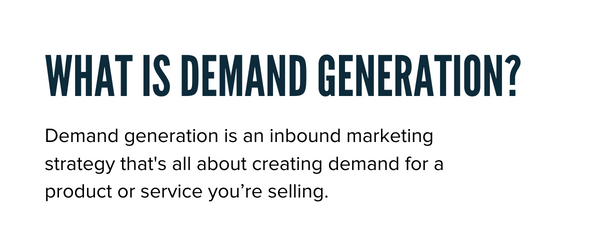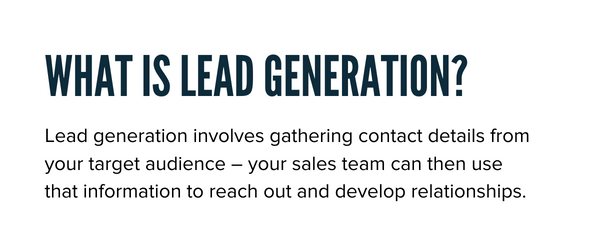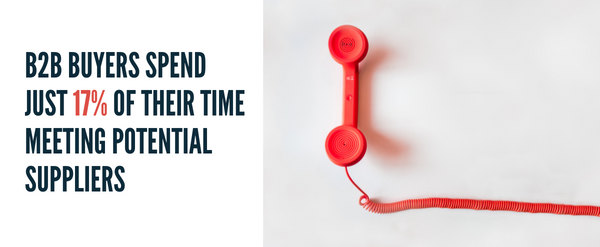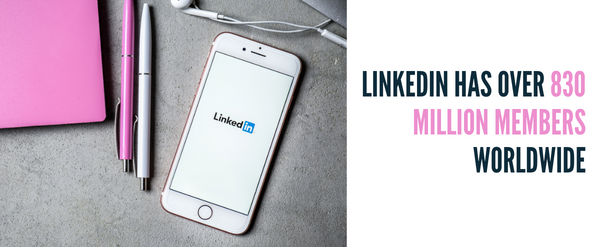Demand generation is a trending topic in the B2B marketing space. In this blog, you’ll learn the crucial differences between demand and lead generation.
Demand and lead generation are often used interchangeably, but they’re two different (albeit connected) tactics.
If you’re struggling to scale your business but unsure why, perhaps you’re focusing too heavily on generating leads that may or may not convert.
With that in mind, perhaps it’s time to switch things up and concentrate on demand generation too.
In this blog, you’ll learn:
Continue reading for the lowdown on demand generation and lead generation and their core differences, with a focus on B2B marketing strategies.
Demand generation is an inbound marketing strategy that’s all about creating demand for a product or service you’re selling.

When implemented effectively, it increases brand awareness, educating potential customers regarding problems they may be facing and how your organisation can help solve them.
Through that, you build trust, cultivate excitement, and drive people to your website. As a result, it’s possible to gather high-quality leads and push for conversions.
Ideal for new businesses or those with a lesser-known offering, demand generation is also useful for established companies striving to expand their customer base. It’s a process, not a one-step plan of action, whereby you:
Meanwhile, the lead generation process involves gathering contact details from your target audience – your sales team can then use that information to reach out and develop relationships.

Where demand generation is a top-of-the-funnel activity, lead generation is a bottom-of-the-funnel plan of attack that qualifies leads and nurtures them into prospects, with the aim of converting them into paying customers.
Demand generation directly impacts and helps you generate leads. How? If you’re successful with your demand gen marketing, the leads you subsequently obtain are already brand aware and interested.
Demand generation builds awareness, excitement and attracts leads, then the sales team works to nurture and convert as part of lead generation. In that sense, lead gen is just one part of the demand gen process.
If those leads don’t know much about your company in the first place – demand generation hasn’t been implemented – you may end up with zero actual leads or a bunch of unqualified ones.
Demand generation makes it easier for your salespeople to sell because they’re dealing with high-intent leads. In turn, that means higher conversion rates and lower customer acquisition costs (CACs).
Generating demand is a collaboration between your sales and marketing teams. There’s an array of methods to consider, including:
Given that B2B buyers spend just 17% of their time meeting with potential suppliers and 27% researching independently online, what’s the key to engaging with potential customers?

By offering them high-authority content. Moreover, your copy should be SEO-optimised, ensuring your website is visible and attracts visitors – sprinkle across blog posts, case studies, videos, ebooks, and FAQ pages.
Note: This content isn’t gated, meaning gathering contacts isn’t the name of the game. The aim is to explore challenges people face and how your product solves them.
This covers webinars, podcasts, live events, and videos, and is a way to build trust by sharing detailed information on aspects of your product or service.
For instance, Ruler Analytics is a marketing attribution tool that can help teams align sales and marketing more effectively – a key pain point for customers and a top way to get noticed and offer value.
A freemium product – giving free access to a basic version of your offering – is a top way to engage B2B buyers, arming them with a better understanding of what you do and the value you provide as a business.
Given decisions typically involve input from six to 10 stakeholders, providing them with a zero-cost way to use and evaluate your product is invaluable.
Once people start using your service and seeing the benefits, that increases the chances of them wanting to learn more, makes it easier to convince senior employees to invest, and raises the chances of the organisation upgrading to a premium paid package.
Furthermore, it also enables you to better understand and analyse how people use your product, helping you make improvements.
With more than 830 million members in over 200 countries globally, LinkedIn is an uber-effective platform for B2B marketing and ideal for demand gen – use it to share your SEO-focused content, free tools, and training.

But remember to offer a rounded experience by also sharing resources from partners and organisations you trust.
Additionally, join groups related to your industry, answer questions and comments, and provide insights to potential customers. It’s also important to ensure your company profile is optimised.
This strategy goes hand-in-hand with demand generation. Why? It hones in on specific firms, with a focus on decision-makers.
Create an account list and target them with relevant and SEO-optimised content and resources.
And where you can, personalise your outreach by addressing specific pain points.
When a potential customer engages with your content and resources and becomes more aware of how your brand can help their business via the methods above, it’s then about capturing their contact info.
Read on for a selection of tactics.
These are ways of getting a lead to permit you to contact them, and they work best as part of a broader demand generation strategy.
The main thing to concentrate on here is high-intent signals and channels, rather than simply gathering as many leads as possible. That way, your cost per lead (CPL) falls.
How do you build an effective lead generation strategy? By being specific and targeted.
Options include:
An extension of the training offered as part of demand gen involves more in-depth and product-focused resources and demos.
And by asking participants to sign up, you gather contact info you can use later to nurture them.
Accessible or downloadable only when a lead gives you info about themselves like their email address and phone number, this is also referred to as a “lead magnet”.
In exchange for that valuable data, users have access to the likes of webinars, video tutorials, surveys, studies, eBooks, and newsletters.
Be sure to provide worthwhile and thoughtful content, otherwise, people will be reluctant to share their details with you.
These track IP and domain info to highlight enterprises that visit your site, what pages they viewed, how long they stayed on each section, plus their exit page.
For example, if you see a company browsed your website nine times, read your blog, and looked at your pricing info, let your salespeople know.
Why?
So they can target and nurture them.
Define what high-intent means to you, and contact businesses that meet or exceed that.
By this point in the process, people are aware of your brand and the value you potentially offer them.
And so, use targeted paid ads to ensure you’re at the top of search results (above organic ones), grabbing the attention of companies you’ve already engaged with during the demand gen phase.
By doing so, cost per click (CPC) reduces and conversions increase.
When a user clicks on a review site, they’re at the bottom of the funnel, seeking to compare options before making a final decision.
Demand has already been generated, so it’s now about making sure you shine on pages like Google, G2, Yelp, SaaSGenius, and Capterra.
How? Regularly check your pricing is up to date and that your features are easy to understand and well-represented.
Next, check the comments section and engage with people: Thank them for their review, and where points are negative, take the time to respond and offer a solution.
Now we’ve outlined what lead generation and demand generation are and their differences, let’s simplify things with a list:
Demand generation
Lead generation
It’s also worth remembering that there’s crossover regarding demand and lead generation tactics.
For example, we mentioned SEO optimisation and making the most of LinkedIn in our “Demand generation tactics” section.
These methods also work for lead generation. When used for the former, it’s about general brand awareness; with the latter, focus more on in-depth and product-focused content.
These inbound marketing approaches go hand-in-hand but play two different roles.
Demand generation raises brand awareness and helps you grow your business, while lead generation qualifies leads and then nurtures prospects into paying customers, driving sales.
Learn how to track where your leads come from, or learn more about lead generation tactics.
____________________________________________________________________________

Romana Hoekstra is a Content Marketing Lead at Leadfeeder, a B2B visitor identification software that tracks and identifies companies that visit your website. Currently, she is leading the remote-first content marketing team and crafts high-performing content marketing strategies with a focus on organic growth, SEO, high-quality content production & distribution. You can connect with Romana on Linkedin.